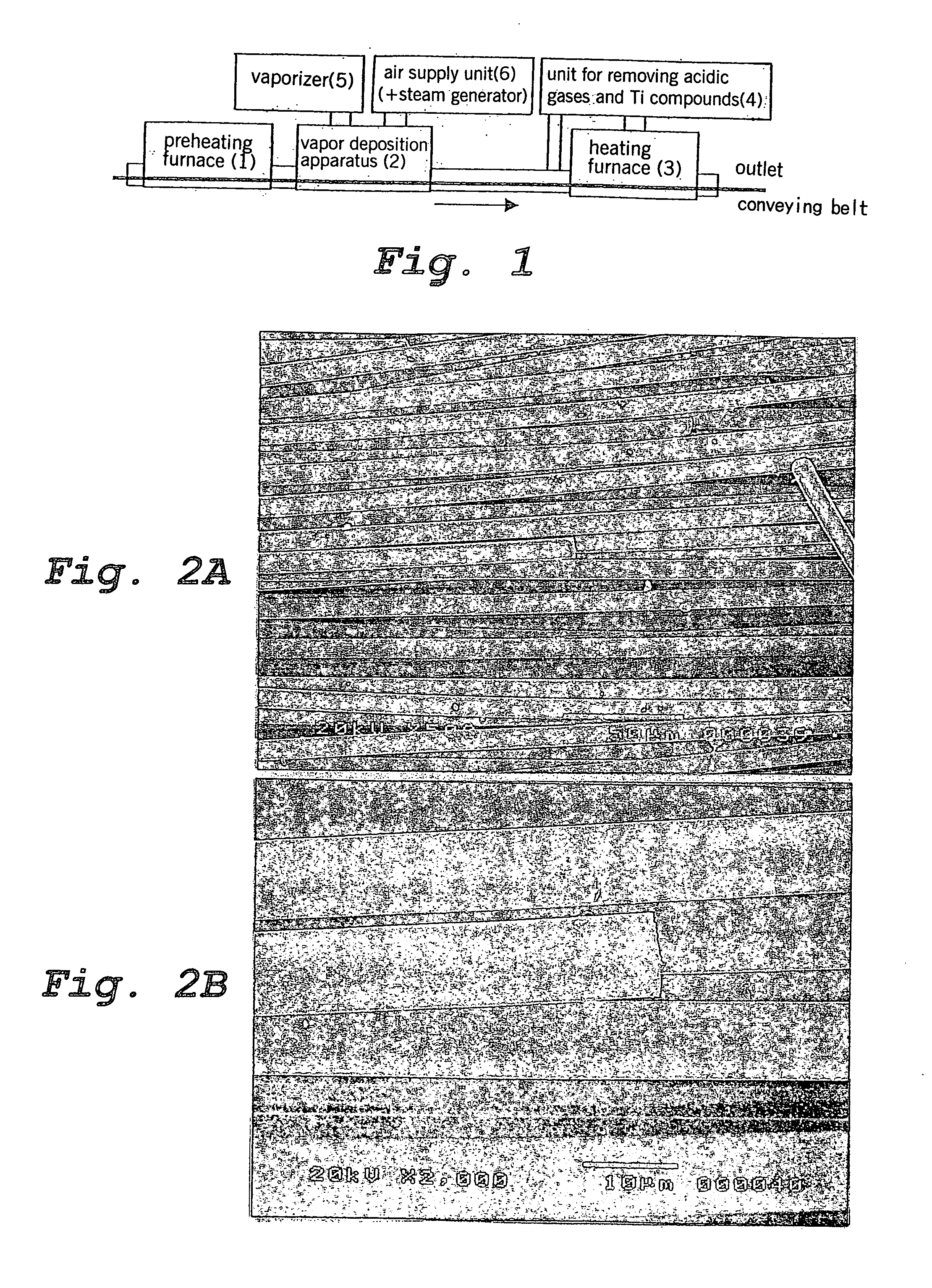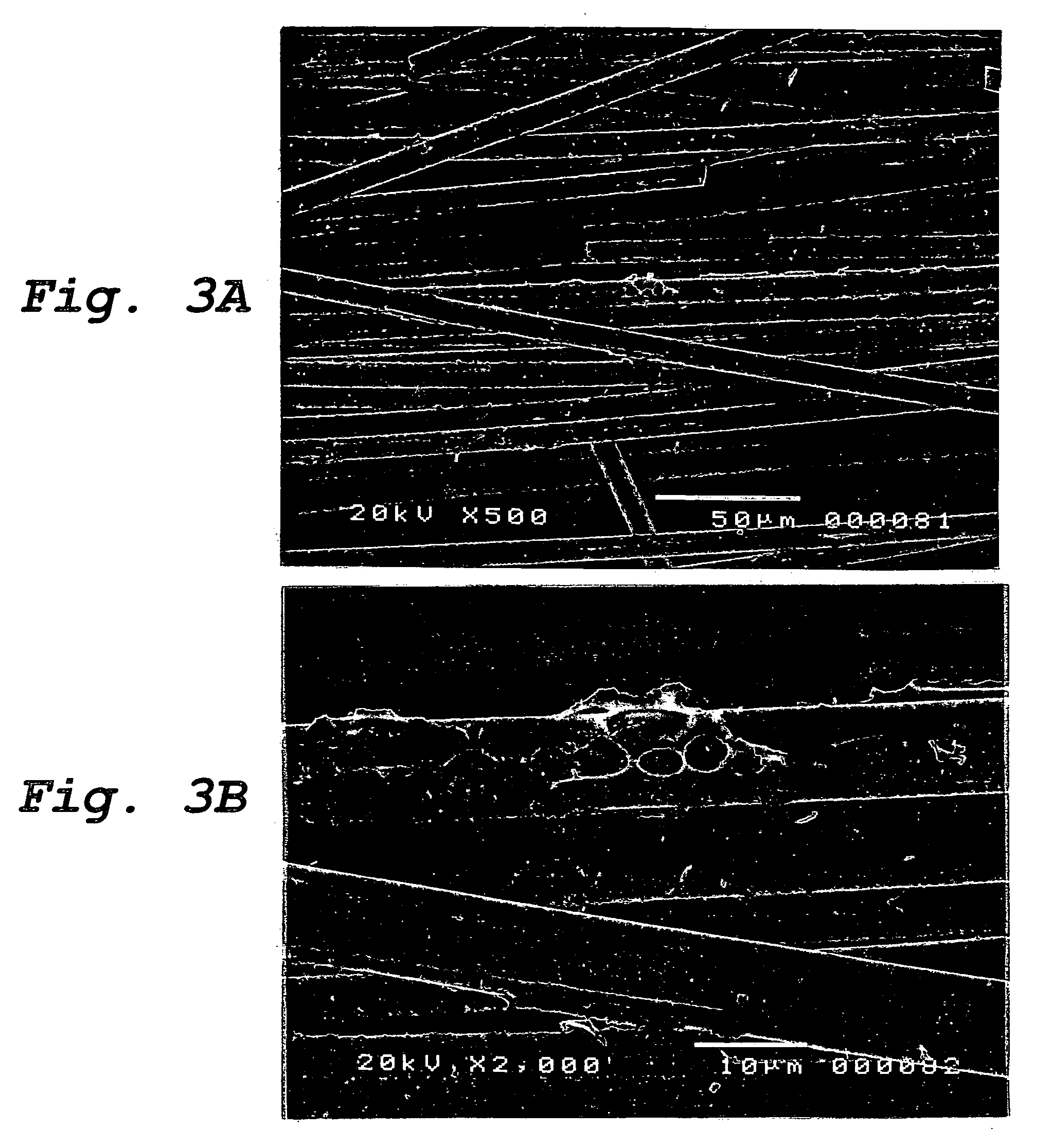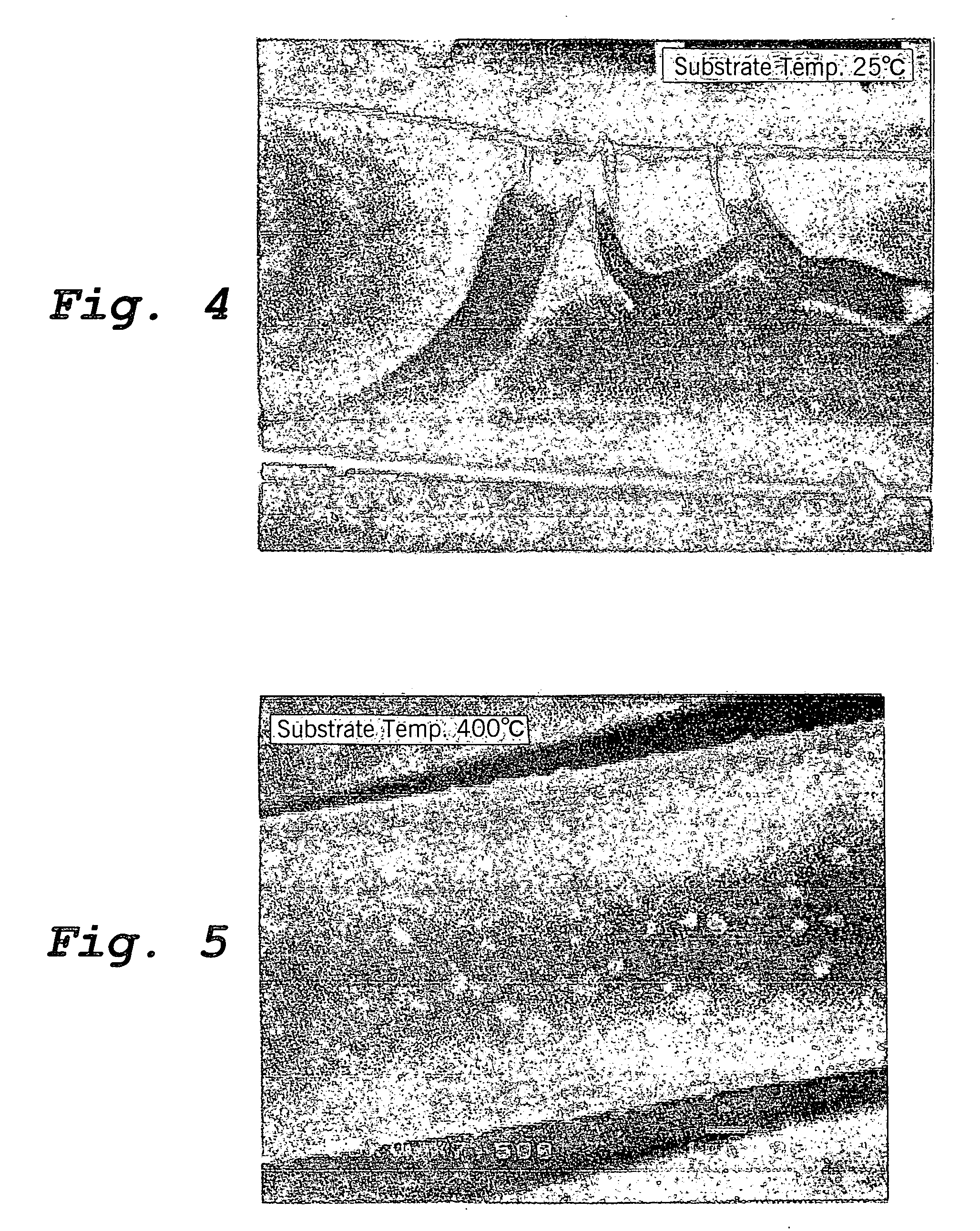Photocatalytic composite material and method for preparation thereof
a composite material and photocatalytic technology, applied in the field of photocatalytic composite materials, can solve the problems of low photocatalytic activity, easy peeling of films, and worsening of durability, and achieve the effect of high active and durabl
- Summary
- Abstract
- Description
- Claims
- Application Information
AI Technical Summary
Benefits of technology
Problems solved by technology
Method used
Image
Examples
example 1
[0081] Photocatalytic composite materials of Runs Nos. 1-10 which comprised a mass of glass fibers as a substrate were prepared in the following manner.
No. 1:
[0082] A silica wool of pure silica fibers having a thickness of about 10 mm (fiber diameter: about 8.0 μm) was cut into a piece about 100 mm square, and the piece was used as a test piece.
[0083] Argon was passed into liquid titanium tetrachloride which had been purified by distillation (purity: 99.99 mass %), and the dilute titanium tetrachloride vapor which was generated was supplied to a vapor deposition apparatus. At the same time, moisturized air which contained water vapor in an amount sufficient to give a H2O / TiCl4 molar ratio of 3 was supplied to the vapor deposition apparatus and mixed with the titanium tetrachloride vapor therein. The test piece was introduced into the vapor deposition apparatus at 25° C. and brought into contact with the mixed vapor for about 300 seconds to effect vapor deposition. Subsequently, ...
example 2
[0106] Photocatalytic composite materials according to the present invention (Runs Nos. 12 and 13) were prepared under the following conditions.
Run No. 12:
[0107] The same glass cloth of T-glass fibers as used in Run No. 6 of Example 1 was coated by spraying with a commercially available ceramic-type coating composition which contained an inorganic pigment (pale blue color) and then with a ceramic-type gloss coating composition. Subsequently, the glass cloth was heated for 30 minutes at 400° C. to cure the colored coating. Then, a coating of a continuous titanium oxide film was formed in the same manner as in Run No. 2 of Example 1 except that the heating temperature was 450° C. to prepare a photocatalytic composite material of glossy blue color according to the present invention.
Run No. 13:
[0108] A composite material comprising a glass cloth of T-glass fibers coated with a continuous titanium oxide film was prepared in the same manner as in Run No. 6 of Example 1. Then, it was...
example 3
[0112] A 40 mm square quartz plate was used as a substrate, and a photocatalytic composite material having a continuous titanium oxide film on the quartz substrate was prepared by vapor deposition with pure titanium tetrachloride in the same manner as in Run No. 2 of Example 1. In this example, the temperature of the substrate (plate) at the time of vapor deposition was varied in the range of 25-500° C. The duration of contact with the vapors was 300 seconds, and the heating following vapor deposition was performed for 60 minutes at 500° C.
[0113] A continuous titanium oxide film was formed in all the cases except that the temperature of the substrate was 25° C. A cross section of the photocatalytic film was observed under SEM, and the average crystallite diameter of titanium oxide was determined by the intercept method.
[0114] Cross-sectional SEM images of the photocatalytic films in which the temperature of the substrate (plate) at the time of vapor deposition was 200° C. and 500°...
PUM
| Property | Measurement | Unit |
|---|---|---|
| Temperature | aaaaa | aaaaa |
| Temperature | aaaaa | aaaaa |
| Temperature | aaaaa | aaaaa |
Abstract
Description
Claims
Application Information
 Login to View More
Login to View More - R&D
- Intellectual Property
- Life Sciences
- Materials
- Tech Scout
- Unparalleled Data Quality
- Higher Quality Content
- 60% Fewer Hallucinations
Browse by: Latest US Patents, China's latest patents, Technical Efficacy Thesaurus, Application Domain, Technology Topic, Popular Technical Reports.
© 2025 PatSnap. All rights reserved.Legal|Privacy policy|Modern Slavery Act Transparency Statement|Sitemap|About US| Contact US: help@patsnap.com



